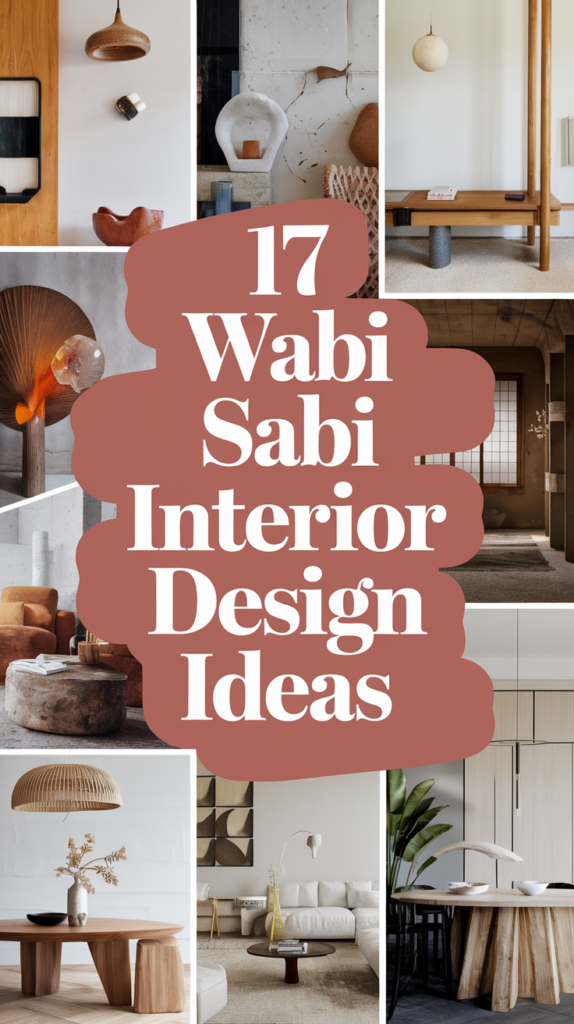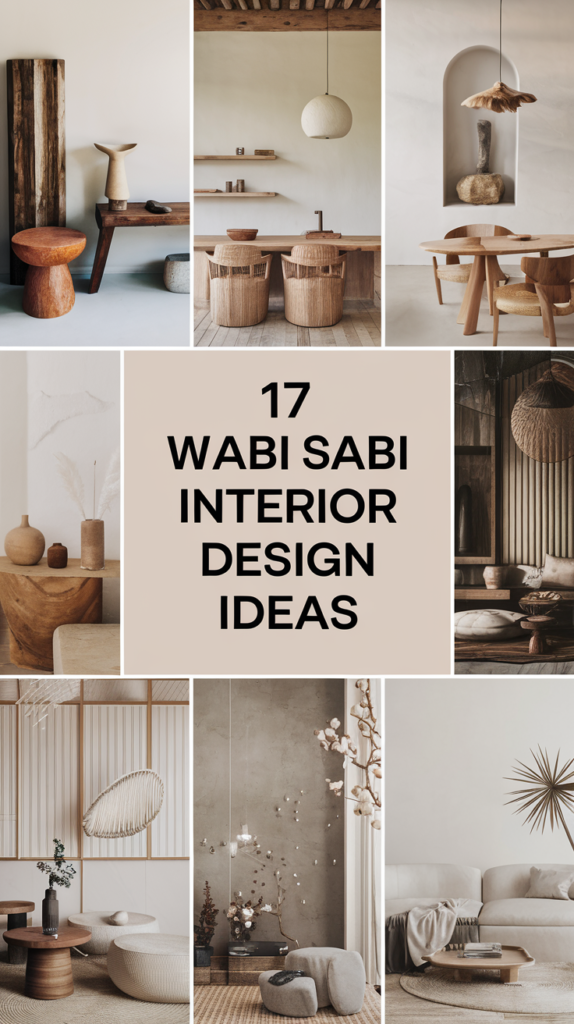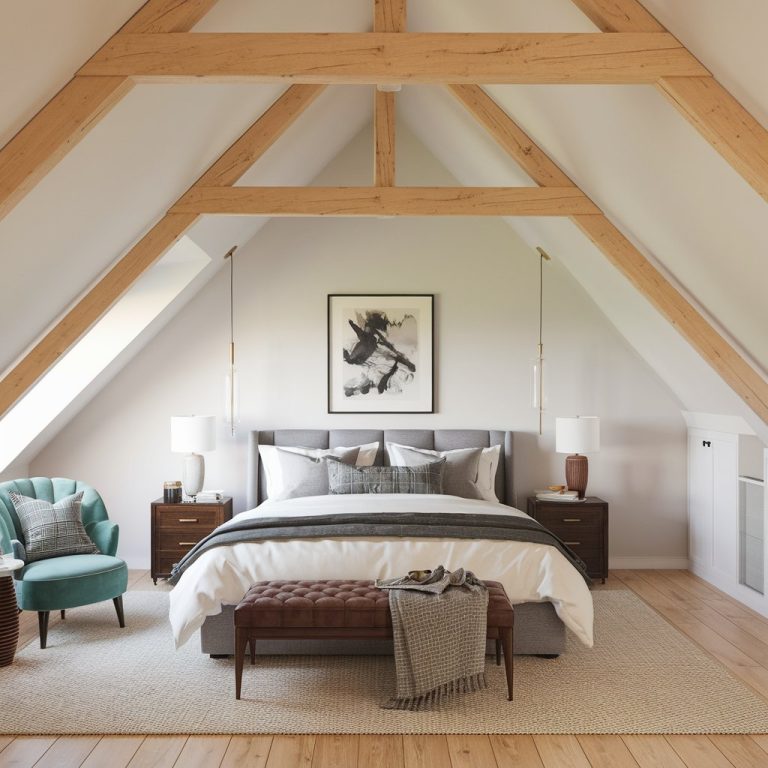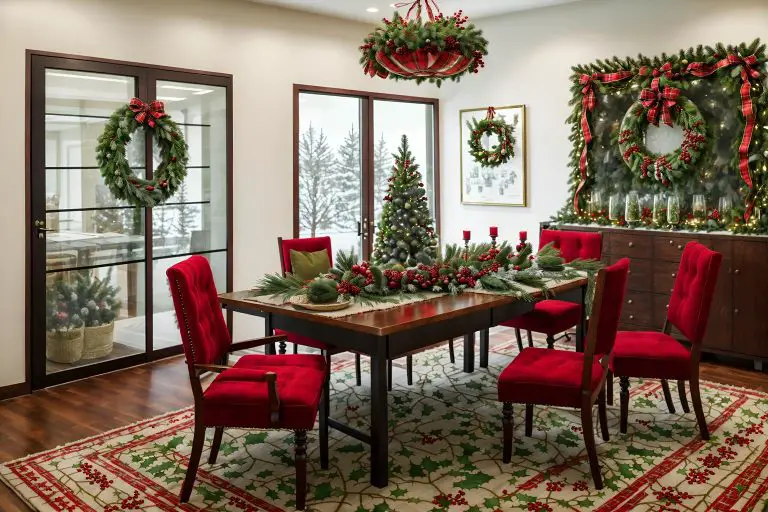17 Wabi Sabi Interior Design Ideas for Simple Living
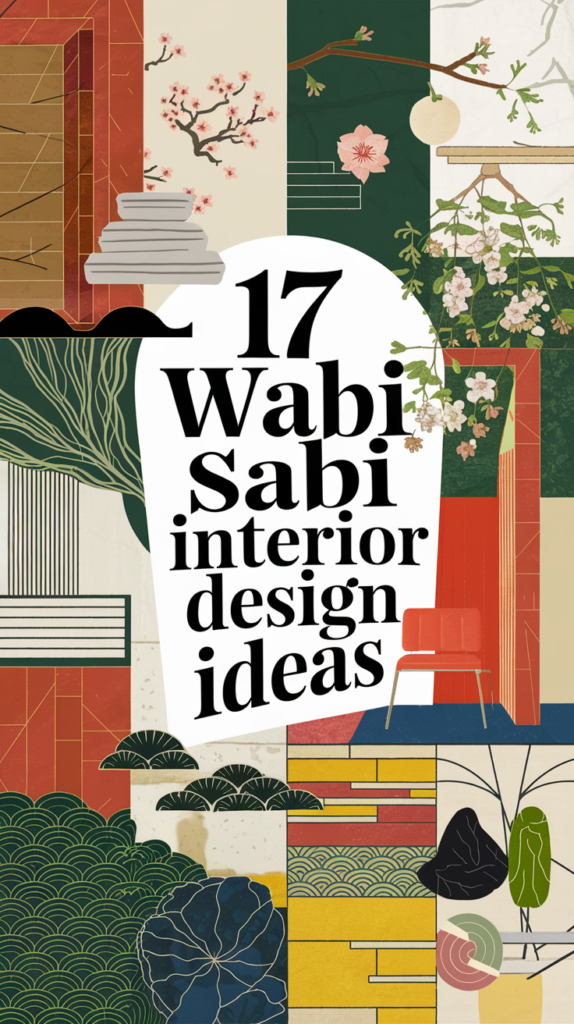
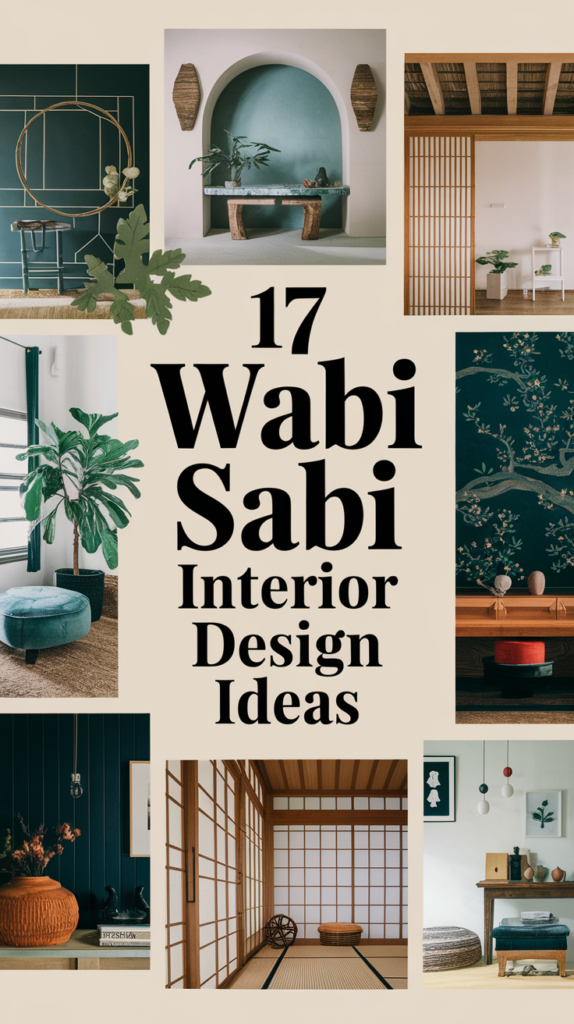
Wabi Sabi is an ancient Japanese philosophy that embraces imperfection, impermanence, and the natural beauty found in simplicity.
It’s about appreciating the raw, the worn, and the imperfect in a way that brings peace and mindfulness into your home.
In Wabi Sabi interior design, the focus is on creating a calming and harmonious space that promotes a connection with nature.
Here are 17 inspiring ways to incorporate this timeless aesthetic into your living space.
1. Use Natural Materials
In Wabi Sabi design, natural materials play a central role. Incorporate materials like wood, stone, and clay to bring an organic feel into your home. The textures of these elements, whether in reclaimed wood furniture or handmade ceramics, invite a sense of warmth and authenticity.
| Material | Benefits | Examples |
|---|---|---|
| Reclaimed Wood | Sustainable, unique | Tables, shelves |
| Stone | Durable, timeless | Countertops, wall features |
| Clay | Handmade, organic look | Vases, pots |
2. Soft, Earthy Color Palettes
The color palette of a Wabi Sabi home is typically grounded in soft, earthy tones that reflect the natural world. Think muted greens, browns, and grays. These colors provide a calming backdrop and make your space feel open, relaxed, and connected to nature. Accent with subtle colors like ochre or terracotta for depth and warmth.
3. Embrace Textured Fabrics
Adding a variety of textured fabrics elevates the visual interest of your space. Consider using linen, cotton, and wool for items like curtains, cushions, and blankets. These materials soften with time, aging gracefully and enhancing the Wabi Sabi aesthetic.
- Layering different textures adds depth.
- Natural fibers like linen evoke warmth and simplicity.
4. Celebrate Imperfect Objects
Wabi Sabi finds beauty in the imperfect and the worn. Display objects with visible wear, such as handmade pottery, vintage furniture, or weathered ceramics. These items tell a story and bring character to your home, reminding you to cherish the imperfect beauty in life.
- Seek out items with scuffs or irregular shapes.
- Incorporate antique or second-hand pieces to add history.
5. Minimalist Decor
At its core, Wabi Sabi embraces minimalism. Focus on decluttering your space and choosing only meaningful decor items. This minimalist approach not only highlights the beauty of the space but also fosters a sense of mindfulness by reducing distractions.
- Display fewer but more meaningful items.
- Ensure each piece has a purpose or sentimental value.
6. Maximize Natural Light
Natural light enhances the serenity and simplicity of a Wabi Sabi space. Use sheer curtains to allow sunlight to gently filter into the room. Consider installing skylights or large windows to let nature’s light flow in and create a soft, welcoming glow.
💥🎁 New Year & Easter Deals On Amazon !
Don't miss out on the best discounts and top-rated products available right now!
🛒 Shop Now and Save Big Today!*As an Amazon Associate, I earn from qualifying purchases.
- Arrange furniture to encourage light flow.
- Consider natural materials for window treatments to soften the light.
7. Incorporate Organic Shapes
Furniture and decor that feature organic shapes—with soft, rounded edges and asymmetry—capture the natural beauty of imperfection. Look for pieces that mimic the curves and forms found in nature, such as a curved sofa or an asymmetrical vase.
| Shape Type | Characteristics | Examples |
|---|---|---|
| Curved Edges | Soft, inviting | Sofas, tables |
| Asymmetrical | Unique, one-of-a-kind | Shelves, art pieces |
| Natural Forms | Mimics nature’s shapes | Lighting fixtures, ceramics |
8. Add Indoor Plants
Bringing the outdoors indoors is essential to Wabi Sabi design. Houseplants provide texture, life, and a constant reminder of nature’s beauty. Select plants with varied textures and shapes to add diversity and vibrancy to your space.
- Opt for simple pots that complement rather than dominate your decor.
- Plants like ferns, succulents, and bamboo evoke tranquility.
9. Artistic Displays with Meaning
When choosing artwork for a Wabi Sabi interior, focus on pieces that reflect natural elements or have personal significance. Consider landscapes, abstracts with earthy colors, or handmade pieces. Simple frames ensure that the art remains the focal point.
- Use a mix of sizes for an eclectic but harmonious look.
- Choose minimalist frames that don’t overpower the artwork.
10. Handcrafted Accessories
Handmade items such as woven baskets, hand-painted ceramics, and knitted throws embody the essence of Wabi Sabi by celebrating craftsmanship. These pieces often have slight imperfections that add to their charm and individuality.
- Support local artisans and sustainable practices.
- Embrace the uniqueness of each handmade piece.
11. Showcase Exposed Structures
One of the hallmarks of Wabi Sabi design is embracing raw, exposed elements in your home. Leave beams, bricks, or pipes visible to showcase the authenticity and natural beauty of your space. This rustic, unpolished aesthetic adds texture and depth.
- Exposed beams or brick walls add character.
- Highlight the raw beauty of materials like wood or metal.
12. Soft, Ambient Lighting
Lighting in Wabi Sabi interiors should be soft and natural. Avoid harsh, overhead lights and instead opt for floor lamps, candles, and pendant lights that create a warm, inviting atmosphere.
| Lighting Type | Effect | Examples |
|---|---|---|
| Floor Lamps | Gentle, ambient light | Minimalist, arched lamps |
| Candles | Adds warmth and tranquility | Various sizes and styles |
| Pendant Lights | Creates focal points | Organic shapes, rustic metals |
13. Simple Layouts with Clear Paths
Focus on simple layouts that promote functionality and ease of movement. Clear spaces encourage a feeling of openness and tranquility, which is essential to the Wabi Sabi lifestyle.
- Avoid overcrowding with furniture.
- Create clear, open pathways for easy movement.
14. Natural Flooring
Natural flooring materials such as wood, bamboo, or stone enhance the earthy feel of a Wabi Sabi home. These materials not only age beautifully but also provide a solid foundation for a serene living space.
- Consider eco-friendly options for sustainability.
- Add natural fiber rugs for added warmth and texture.
15. Earthy Centerpieces
Decorate your dining or coffee table with earthy centerpieces that reflect nature’s simplicity. A simple bowl of stones, branches, or dried flowers can serve as a grounding focal point that changes with the seasons.
- Change centerpieces seasonally to reflect nature’s transitions.
- Use materials like wood, clay, or woven baskets.
16. Japanese-Inspired Accents
Since Wabi Sabi originates from Japan, incorporating Japanese design elements can further enhance the aesthetic. Consider adding tatami mats, shoji screens, or low furniture to bring a more authentic feel to your space.
💥🎁 New Year & Easter Deals On Amazon !
Don't miss out on the best discounts and top-rated products available right now!
🛒 Shop Now and Save Big Today!*As an Amazon Associate, I earn from qualifying purchases.
| Element | Description | Purpose |
|---|---|---|
| Tatami Mats | Straw mats for flooring | Adds soft, natural texture |
| Shoji Screens | Sliding paper screens | Create privacy, filter light |
| Low Furniture | Tables and seating close to the floor | Promotes a grounded, intimate vibe |
17. Eclectic Combinations
Lastly, Wabi Sabi encourages mixing and matching different styles and periods to create a unique, eclectic space.
Combine vintage and modern pieces to contrast old and new, or juxtapose rough textures with smoother surfaces for an eye-catching, balanced look.
- Mix old and new to create contrast.
- Be mindful of maintaining harmony with color and texture.
Embracing Wabi Sabi in Your Home
Integrating Wabi Sabi interior design into your home fosters a lifestyle of mindfulness, simplicity, and a deep connection to nature.
By embracing imperfections, using natural materials, and focusing on minimalist decor, you can create a space that exudes warmth, authenticity, and serenity.
